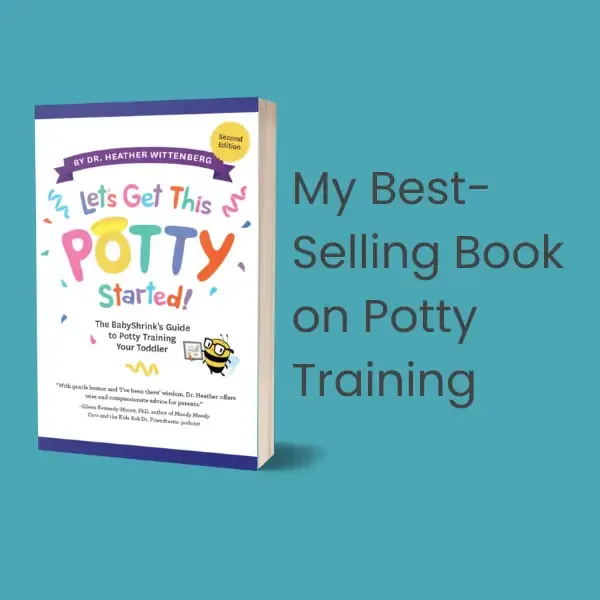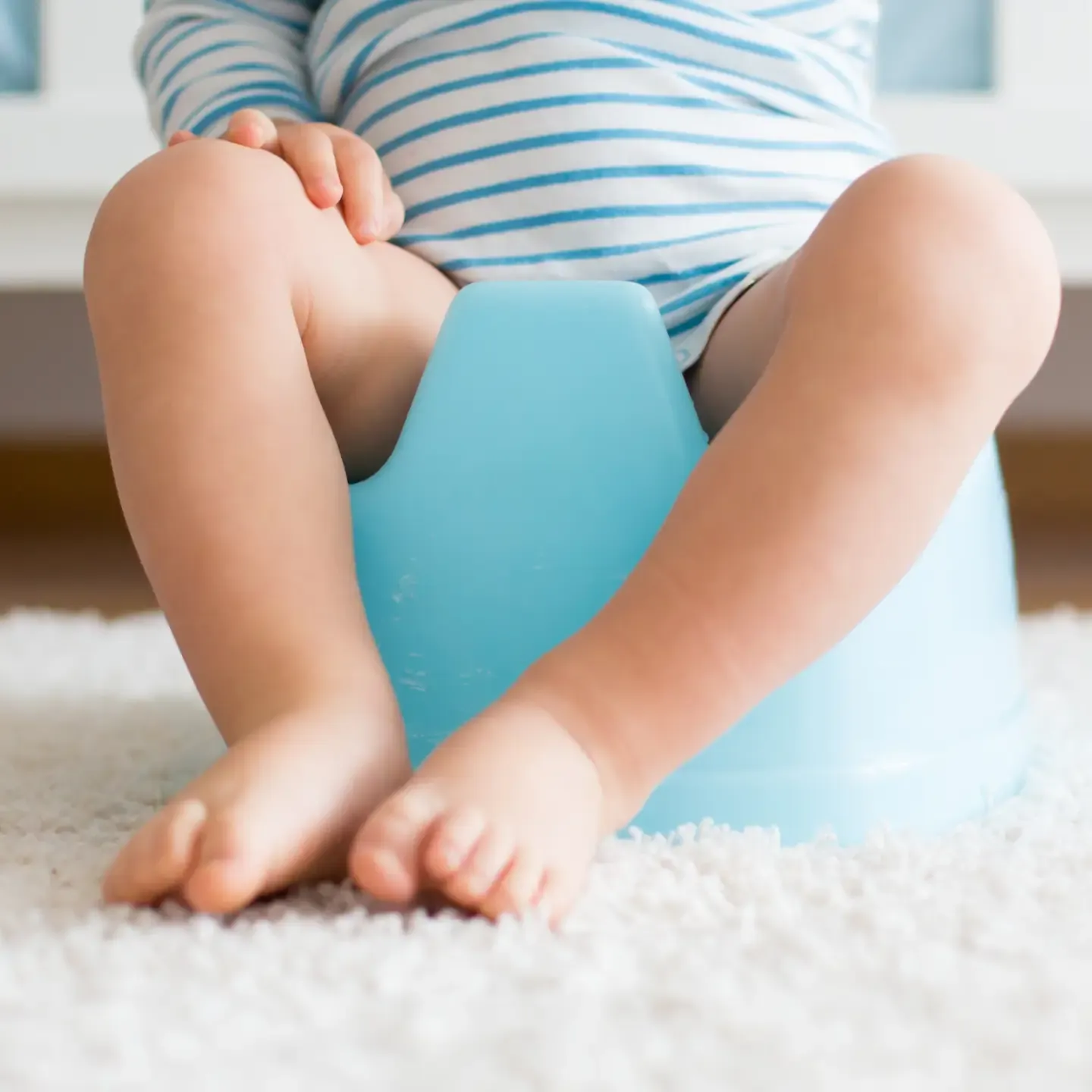
The Surprising Bath Phobia Phase: Overcoming Sudden BATH FEARS in Babies and Toddlers
One day, your baby LOVES bath time—splashing, giggling, having a blast. And then, out of nowhere... BATH TERROR. Screaming, thrashing, sheer panic. It's as if an electrical shock is running through the water somehow. Your little one acts like the water is physically HURTING them, but the doctor says they're fine. What happened?!
This strange, wacky, worrisome change in your toddler, as scary as it can be, is actually a totally normal developmental phase—and I'll explain exactly what you can do about it, along with WHY it happens.
Watch my video: For an expanded discussion on bath fears, check out my complete YouTube video on this topic.
The Reality Behind Bath Fears
As a parenting psychologist and mom of 4 kids (all of whom went through this phase!), I can tell you that your toddler is undergoing SO MUCH transformation, SO FAST, in their BRAIN, that weird shifts like this happen all throughout toddlerhood. Bath fears are just one of many seemingly inexplicable behavior changes you'll witness.
The good news? Getting a handle on this particular challenge will help you manage all the other wild and wacky toddler transformations that are taking place – or still to come.
Important disclaimer: I'm assuming your child is healthy and there's no medical problem causing this fear (which usually, there isn't). But that's something for you to check out with your pediatrician first, especially if the fear is accompanied by other symptoms. As always, this post should NOT be used as a substitute for medical evaluation, diagnosis, and treatment for your child or family.
Solution #1: Ease Up on Bathing Frequency
Pediatricians say we usually bathe our little ones TOO MUCH. Babies need to be wiped down from obvious food and poop, but generally, their skin is pretty sensitive and not particularly stinky.
If your little one is terrified, it's perfectly okay to skip the full bath for a few days. Instead, try:
- A gentle sponge bath while they’re pulling up or standing OUTSIDE of the tub
- A thorough wipe-down with baby washcloths
- Focusing on the grossest/essential areas (diaper region, face, neck folds, etc)
What's fascinating is that many children going through bath fears still LOVE playing with water—just not being IN it. All 4 of my kids went through phases like this, and they still eagerly played with water from the OUTSIDE of the tub. As long as I reassured them they weren’t going IN the tub today! “We’re just standing here at the side of the tub, playing with water today!”
This contradiction is actually what makes this phase so confusing for parents. Your child isn't developing a fear of water—they're scared of something much more specific about the bathing situation itself.
Try letting them:
- Stand outside the tub and bathe their toys IN the tub
- Help you bathe a pet, or "wash" a sibling's hair or back (with supervision)
- Dry and organize their water toys from outside the tub – while safely on the bathroom floor
This fear is much more about being IN the slippery tub—and being OUT of CONTROL—than about the water itself. Standing outside the tub on solid ground gives them that crucial sense of control, which helps because they feel so OUT of control ALL through this stage of development.
Solution #2: Change the Bathing Environment
Many toddlers who HATE the bathtub still LOVE playing in water in other places. The change of environment can make all the difference to them.
Try the Kitchen Sink
For smaller toddlers, the kitchen sink provides a contained, less threatening space. I used to keep a few clean baby washcloths in the kitchen specifically for this purpose. The familiar kitchen environment often feels safer than the slippery, echoing bathroom with a much bigger tub. Option: Have your toddler stand on a toddler-safe step stand at the kitchen sink (with you immediately next to them for safety, of course), and give them a quick wipe down. Ask them to “help” rinse the (toddler-safe) dishes and otherwise engage them so they’re not focused on “getting clean.”
Take It Outside
If weather permits, an outdoor kiddie pool or splash pad can work wonders. You can sneakily add a little baby shampoo in with their toys and get your kiddo cleaned up right there in the yard. The open space, fresh air, and playful context completely transforms the experience.
Solution #3: Give Back Control and Choices
Toddlers are in a fascinating developmental stage where they desperately want independence – but also need security -- because of all of the mind-blowing, life-changing developments they are experiencing DAILY. Nowhere is this more apparent than in situations where they feel vulnerable, like bath time. Having even a bit of control, plus the ability to make choices, helps restore a sense of equilibrium.
- Let your child STAND in the tub while holding on to the side for stability while you wipe them down (as long as there's a no-slip tub bottom, and you’re there to provide safety and support to prevent falls)
- Keep the drain open with water flowing gently from the faucet
- Allow them to approach the water at their own pace
- Give them tools like cups or sponges they can handle and play with
The key is to provide reasonable OPTIONS that let them feel in charge. You might say: "OK, you can stand at the edge here and lean on the side of the tub. I need to wash your feet now—can you help? Wow, your tummy is all clean now. How about cleaning your doll's tummy?"
Solution #4: Make Bath Time Fun Again
If bath time has become stressful for both you AND your toddler, it's time to completely reframe the experience.
Every few days, set up a "party bath" with:
- Fun bubbles or colorful bath drops
- New or novel bath toys (the simplest plastic kitchen measuring cups were always the most popular with my kiddos)
- An upbeat, no-pressure attitude
This approach helps everybody rediscover the joy of bath time at your baby's own pace. Remember—your child NATURALLY STILL LOVES WATER PLAY. Their love of water is still there, and it will come back. Because let's face it, water is FUN.
This temporary water freak-out doesn't wash that love of the water away; it just obscures it for a while as their fears take center stage during this time of RAPID developmental growth and change.
When You Need to Bathe Them Anyway
Let's be real—sometimes your toddler will get truly messy (eggs in their hair, mud everywhere, diaper blowouts) and will NEED a proper cleanup.
-
If they MUST have a bath, try these control-giving approaches:
- TALK WITH THEM about the bath to come, how it’s going to happen, and what you’re doing to help them feel safe and secure. Use simple language with a matter-of-fact, reassuring, non-reactive tone of voice. Allow them time to process and suggest changes. Give them choices whenever possible. If you’re searching for words, mimic one of your child’s best babysitters, daycare providers, or teachers – use the words and tone they might use.
- Make the bath as fast and efficient as possible. Talk them through every step, and let them know what's left to clean so they understand when they're almost done.
- Approach cleaning body part by body part as they become comfortable. This gradual, respectful approach acknowledges their need for autonomy while still getting necessary cleaning done.
Giving them that sense of choice and control makes all the difference between a traumatic experience and a manageable one.
If You've Already Pushed Too Far
Maybe you've already pushed bath time because you got desperate and scared: "Oh my God, my kid is NEVER going to be clean again! What's wrong with them? What's wrong with ME?!" Now they're even more scared of bath time than before.
First, take a deep breath. It's not your job to be a PERFECT parent. You just have to be GOOD ENOUGH.
Research confirms this. The occasional misstep actually helps build RESILIENCE—in your little one, in you as a parent, and TOGETHER in your RELATIONSHIP.
When things go sideways with your toddler (and they WILL, a LOT), what matters most is HOW YOU HANDLE IT and HOW YOU REPAIR IT together with your child. You're setting a foundation of learning about each other: When you get something wrong, you go back and try again differently—better. That’s how to build a securely attached relationship.
This repair process teaches one of life's most valuable lessons: sometimes, things go weird between people. And then, we dust ourselves off and try again.
You might say: "OK Kiddo, I got it wrong last time. I pushed the bath, and you were scared and upset. But I thought about it, and I realized maybe the inside of the tub is just too scary for you right now. So since your toys are still dirty tonight, how about you stand here on the OUTside of the tub and YOU can give THEM a bath?"
Then, if they get comfortable and start having fun, you can take your damp washcloth and say, "Here's a little wipe down," while reassuring them, "You're not going in the tub tonight. I'm just wiping this spaghetti sauce off your face."
Acknowledge their feelings, come from a place of EMPATHY, while still being the PARENT—knowing that, ultimately, kids need to get clean occasionally.
Try saying: "I know that last bath was scary for you, and I'm going to find a way to get you clean that isn't so frightening. From now on, we'll go slow and do it in a way that feels better for you."
The Fascinating Psychology Behind Bath Fears
Now let's dive into what's really happening in your toddler's rapidly developing brain.
The Connection Between Walking and Fear
One of the most influential pediatricians in child development—Dr. T. Berry Brazelton—explained that between 12 to 18 months, we EXPECT A SURGE IN TODDLER FEARS. Surprisingly, this surge usually COINCIDES WITH YOUR LITTLE ONE LEARNING TO WALK.

T. Berry Brazelton, MD -- World Renowned Pediatrician (Creative Commons Photo License)
As your toddler learns to walk AWAY from you, they suddenly realize: "Hey! Where's Mom? Where's Dad?" They desperately WANT independence, but this newfound freedom is simultaneously SCARY.
Toddlers are suddenly exposed to what seem like minor risks to us, but are HUGE to them:
- Toddling into the hallway and suddenly not seeing you
- Taking a tumble when no one's right there to catch them
- Crashing into the corner of a table while cruising away from you
With this newfound mobility comes a thrilling sense of independence... but also a new awareness of DANGER. The realization hits them: NEW – AND SOMETIMES BAD – STUFF CAN HAPPEN TO ME WHEN I AM MOVING AWAY FROM MOM OR DAD. This contradiction is both exciting and terrifying all at once.
The Rapprochement Phase
Psychologist Margaret Mahler described this developmental period as the "Rapprochement Phase"—the constant back-and-forth toddlers feel between wanting independence, and needing reassurance. Your toddler wants to explore – but also needs to know that you're their safe base.
This explains the seemingly contradictory behavior you might notice: your toddler runs away from you, then bursts into tears when they realize you're not right behind them. They push you away, then cling desperately moments later.
The Bath – From Your Toddler's Perspective
Now, think about bath time from your TODDLER'S perspective:
- The tub is SLIPPERY—and they're NEW walkers, not fully confident on their feet yet
- Water and soap can sting the new little scrapes and cuts they’re getting from practicing their new mobility skills
- They're still figuring out balance, and the shifting water throws them off-kilter
- That drain? Absolutely terrifying! "If water disappears down there... maybe I could too??"
Dr. John Bowlby, famous for founding Attachment Theory, would explain this fear as a natural survival instinct. Your toddler seeks security, especially while they're learning new mobility skills—and the bath, for now, just doesn't feel safe.
What’s Going On Inside that Cute Little Head? Magical Thinking Makes Bath Fears Worse
There's something else happening in your toddler's mind—it's filled with magical, irrational thinking. They haven't yet reached the age of LOGIC.
Their world is full of fantasies – possibilities both wonderful and terrifying. The drain might not just "take the water away"—in their mind, it might come alive, growing larger, waiting to swallow them up, too.
No amount of logical explanation from us will convince them otherwise, because they simply aren't developmentally ready to reason through their fears yet. Saying "Don’t worry - that's not possible, you're too big for the drain!" won't register, no matter how many times you repeat it.
How Your Toddler Will Overcome This Fear
So how does your little one eventually learn that the bath is safe again? Through two powerful mechanisms:
First: Through Play and Experience
When you allow your toddler to explore water on their own terms—safely, with you right there—playing, pouring, feeling in control, they start building POSITIVE associations with bath time again.
They re-experience firsthand that water isn't dangerous, and that THEY'RE in charge of how they interact with it. Gradually, they rediscover their natural love of water play.

Second: Through Their Relationship With YOU
Most importantly, they learn the bath is safe again through their trusting relationship with you. Over time, they're learning that when things go wrong, they can count on you to keep trying until things work out better.
YOU'RE setting the tone, as the parent, that "we're gonna get this right, eventually." Because you DO eventually get most things right with them, your child absorbs a sense of confidence in you—a sense of SAFETY that becomes internalized.
This is how a secure attachment forms in your toddler—not through perfection, but through consistent repair and respect for their developing needs.
Connecting Bath Fears to Other Toddler Behaviors
Once you understand this developmental phase, you'll start recognizing it in other seemingly unrelated behaviors:
- Suddenly clingy at bedtime after months of easy separations
- New fear of previously loved activities (like swings or slides)
- Stranger anxiety that appears out of nowhere
- Refusing to wear certain clothes or eat familiar foods
All these behaviors connect to the same underlying development: your toddler's growing independence combined with their deeper understanding of separation and potential dangers. It's all part of Mother Nature's incredible (but decidedly NONLINEAR) plan for your child's rapid development.
Rather than seeing these phases as problem behaviors, recognize them as signs of your child's exploding cognitive and emotional growth. These changes show your little one is right on track developmentally!
The Good News: This Phase WILL Pass
Parents—hang in there. Fear of the bath—as common as it is—is just a small blip in your toddler's journey toward independence and a secure attachment with you.
By being patient, empathic, and creative, you're not just helping them through bath fears. You're building their confidence in:
- Their ability to overcome challenges
- YOUR reliability as their secure base
- The safety of exploring the world around them
This seemingly frustrating phase typically lasts about 3-4 months MAX, but usually resolves much sooner, with the approaches I've outlined.
And when your child does overcome this fear? Celebrate it—not just as a return to easier bath times, but as evidence of your child's growing emotional resilience – and your family's ability to navigate developmental challenges together.
FAQs About Toddler Bath Fears
How long do bath fears typically last in toddlers? Most bath fears last anywhere from a few weeks to 3-4 months, though every child is different. With patient, consistent approaches, many children overcome these fears more quickly.
Should I force my child to take a bath when they're afraid? Forcing bath time usually makes fears worse and can damage trust. Instead, use the alternative approaches described above and focus on giving your child control within safe boundaries.
What's the minimum bathing frequency needed for toddlers? Pediatricians suggest that toddlers typically only need 2-3 baths per week, unless they're visibly dirty. Daily sponge baths of face, hands, and diaper area are usually sufficient between full baths.
Could bath fears be a sign of something more serious? While bath fears are typically a normal developmental phase, sudden intense fear accompanied by other symptoms or behavioral changes should be discussed with your pediatrician.
Will my child develop poor hygiene habits during this phase? No—this phase is temporary, and creative approaches to cleaning will maintain hygiene while respecting your child's developmental needs.
How can I handle bath fears with multiple children? Sometimes having siblings bathe together can help a fearful child. Alternatively, let the fearful child watch (from outside the tub) as siblings enjoy bath time, which can gradually rebuild positive associations.
Still have more questions? Book a 1:1 consultation with Dr. Heather for personalized parenting help, info, and feedback. Hit "Book A Consultation" above to schedule.
_________________________________________________________________________________
Additional Sources: Lehigh University. (2019, May 8). 'Good enough' parenting is good enough, study finds. ScienceDaily. Retrieved April 13, 2025 from www.sciencedaily.com/releases/2019/05/190508134511.htm
_________________________________________________________________________________
Dr. Heather Wittenberg is a Mom of 4 and a parenting psychologist specializing in the development of babies, toddlers, preschoolers – and their parents. She is the founder of BabyShrink.com and author of "Let's Get This Potty Started! The BabyShrink’s Guide to Potty Training Your Toddler". To see Dr. Heather explain these tips herself, watch Dr. Heather's YouTube video on Toddler Bath Fears.







